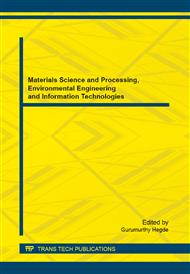p.661
p.668
p.674
p.679
p.685
p.691
p.698
p.706
p.712
The Application of Image Entropy in the Recognition of Free Fluid Spread Motion
Abstract:
In this paper, we introduce the image entropy value into the image pattern recognition of movement, to distinguish the differences between solid movement and diffusion movement. Through the theoretical analysis of the fluid free diffusion movement, the characteristics of the movement were summed up, and the effect of the movement on images was studied. Through simulation and calculation of different movement, their effects on image entropy’s variation were summarized. Finally, through experiments, the image entropy’s variation in practical application was explored, and the results were analyzed. The result turns out to be positive.
Info:
Periodical:
Pages:
685-690
Citation:
Online since:
October 2014
Authors:
Price:
Сopyright:
© 2014 Trans Tech Publications Ltd. All Rights Reserved
Share:
Citation:


